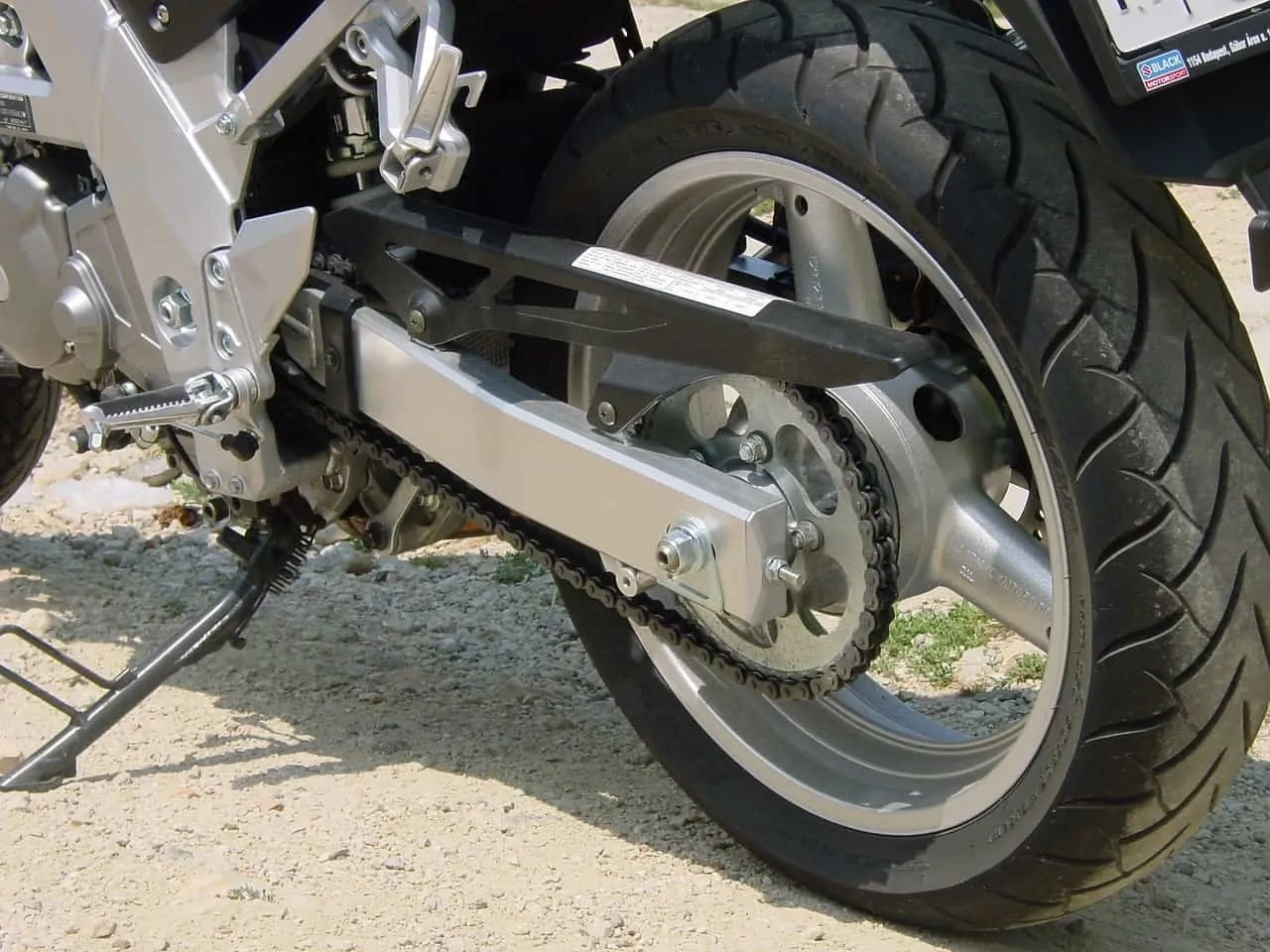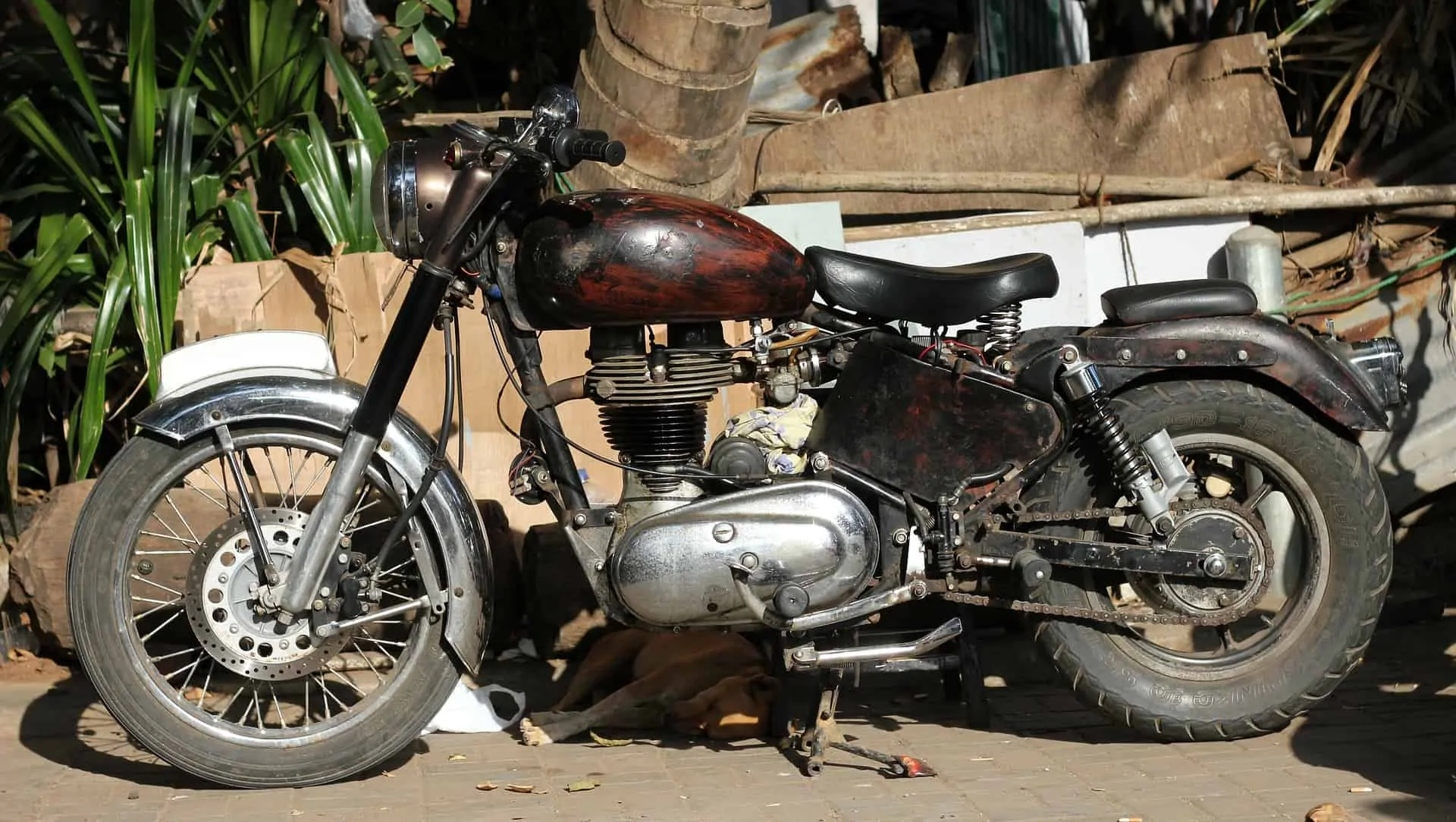The motorcycle tires have a specific lifespan until it’s time to replace them. This is a necessary step that you shouldn’t overlook because it’s the difference between riding safely and getting into an accident.
There are five different signs for when you should replace your motorcycle tires.
- There are obvious signs of wear.
- The tires are too old to be used.
- The tires are irreparably punctured and cut.
- The front tire is cupping. This means it’s starting to look uneven.
- There is uneven tread wear which indicates serious underlying issues.
In the interest of safety, it’s important to familiarize yourself with these signs so that you can keep your motorcycle in perfect shape.
Obvious Signs Of Wear
This is a no-brainer because if your tire looks battered, then it’s definitely a good time to get rid of it. For a more technical assessment, there is a Tread Wear Indicator (TWI) in every tire. This is a small raised rubber located between the grooves of the motorcycle tire. They are usually located about 1/32” or 2/32” below the surface of the tire.
Make sure to keep an eye out for the levelness. If your tires are nearing the tip of this indicator, it’s time to change them out. Refrain from waiting to the very last minute and wearing your tires beyond the safety guidelines. An allowance gives you ample time to make the switch without endangering yourself. Checking the TWI should be a part of your motorcycle maintenance routine.

The Tires Are Too Old
Rubber tires are non-biodegradable which means that there’ll be no obvious signs of age. Your motorcycle tire can look perfect with no tread wear or cuts but can still be unviable because of its age. The rule of thumb is to replace your tires every five to six years. Those years are enough for the development of insidious problems, like dry rot or accumulated structural damage.
You can easily identify the tire age by taking a look at the manufacture date that’s embossed on the wheel. Look for the acronym “DOT” located on the outer side of the tire. This stands for “Department Of Transportation.” There is a 4-digit number printed on the same line. The first two digits stand for the week while the last two digits stand for the year the tire was manufacture. For instance, if the number is 3412, you should read it as the “34th week of the year 2012.”
The Tires Are Punctured And Cut
There are serious tire damages that cannot be repaired with simple patches. These include punctures and cuts. The damages are caused by the constant contact of the wheel towards the hard pavement. The jagged rocks and spiky trails can puncture and cut tires. The general rule is to not use tires that are flat or with holes in them. It is very dangerous to do so.
There are more signs of irreversible damages that you should be aware of. Replace the tire if there are any cuts, both at the bottom and the sides. You should also replace it if there are visible beads, deformed tread rubber, shredded parts that drag when riding the motorcycle, as well as signs of corrosion. Make sure to keep an eye out for these signs. You can also ask a technician to take a look at your tires whenever you bring your motorcycle in for routine inspection.
The Tires Are Cupping
What is cupping, you ask? Cupping means an uneven wear pattern on your tires, specifically the presence of “cups” through rises and falls on the surface of the tires. Another name for it is tire scalloping. That means that your motorcycle tire won’t make full contact with the road. Some of the concave areas won’t even touch the ground.
This can affect your balance as you ride. It likewise affects your general safety because you no longer have full control over your wheels due to its unpredictable shape. Another side effect is that your wheel will most like create a rumbling sound whenever you ride at high speeds. This wheel shape will also be uncomfortable to ride at moderate speeds.

Tire cupping is caused by a number of reasons. It may come from faulty shock absorbers or suspension parts in your motorcycle. That means the tires take the full impact of making harsh contact with the ground which causes the deformed shape. The lack of bounce in the motorcycle will increase the friction on the wheels, which then alters its structure.
Another cause for this is wheel misalignment. If your front wheel is installed at a different angle compared to the back wheel, one or both of the wheels will constantly struggle to keep up with the terrain and result in unevenness. It may be challenging to determine if your wheels are installed at the correct angles. You can check the tread marks on the wheels to correct the positioning.
The last reason for cupping is the quality of the tire itself. If you invested in poorly made tires that are cheaper than the usual, you can expect them to be unable to uphold the proper structural integrity to have a smooth motorcycle riding experience.
Cupped tires can sometimes be salvaged. They can be reversed if caught early on or if the main issue is the suspension parts of your motorcycle. Make sure to consult a professional before you make the decision to keep it.
Uneven Tread Wears
The usual tread wear pattern runs along the outer surface of the wheel. If there are patchy tread wears, this indicates an underlying mechanical problem with the motorcycle. Diagonal tread wears are also deemed as alarming. This is caused by wheel misalignment.
The causes of the uneven tread wear include wheel misalignment, a faulty suspension system, a malfunctioning shock absorber, a lack of air pressure in the wheels, and many more. The unevenness of the tire poses risks to your safety while you are riding your motorcycle. The altered shape will make it hard for you to ride comfortably. The unevenness can cause you to lose your balance while riding.

Uneven tread wears are avoidable. Make sure to check the balance of the motorcycle every six months. Keep an eye out for these signs so that you can remedy them immediately.
Final Thoughts
The aforementioned five signs are very important to know when it’s time to replace your motorcycle. There are other factors that affect the longevity of your tires, from the frequency of usage to the texture of the road you are riding on. Your braking habits can also influence the way your motorcycle tires wear.
You should make it a point to constantly check for these signs so that you can remedy the problem as soon as possible. The delay in replacement can mean life and death for someone. Riding a motorcycle is already generally unsafe which is why you must take the extra precaution in making sure everything is in perfect shape, particularly the motorcycle tires.
It’s quite challenging to replace a motorcycle tire on your own so if you are inexperienced, it’s better to bring your motorcycle in for the replacement. Make sure to inflate the new tire to the proper psi for wheels. Check for leaks before you ride your motorcycle again.
